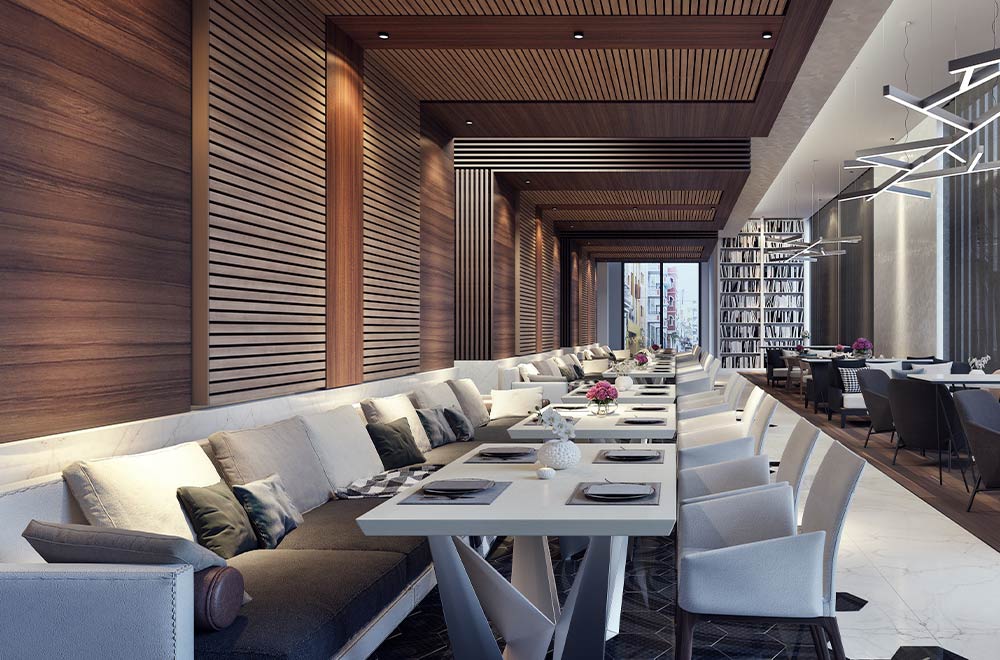Pan Asian Restaurant Islamabad: Discover Exquisite Asian Cuisine
Pan Asian Restaurant Islamabad: Discover Exquisite Asian Cuisine
Blog Article
Savor Genuine Eastern Food With a Pan-Asian Twist for a Culinary Experience
Embarking on a culinary trip through genuine Eastern cuisine, boosted with a Pan-Asian spin, supplies a special opportunity to discover the rich tapestry of tastes that define the area's diverse cooking practices. As you consider these luring dishes, take into consideration the cultural narratives and historic impacts that shape them, each bite supplying a story waiting to be uncovered. pan asian dining Islamabad.

Checking Out Pan-Asian Tastes
In the world of global gastronomy, Pan-Asian cuisine stands apart for its exceptional variety and the unified interplay of flavors from various Eastern cultures. This culinary approach commemorates the unique ingredients and abundant customs located across the continent, developing a tapestry of preferences that is both fascinating and gratifying. Key to Pan-Asian cuisine is its capability to balance different tastes-- pleasant, salted, spicy, and sour-- while highlighting the freshness and quality of each active ingredient.
From the umami-rich soy sauce of Japan to the fiery chili peppers of Thailand, Pan-Asian cuisine uses a comprehensive combination of flavors. These aspects are typically integrated in innovative ways, improving dishes with layers of complexity. For instance, making use of great smelling natural herbs such as lemongrass and cilantro, typical in Vietnamese and Thai food, adds a refreshing brightness to meals, while the unification of coconut milk supplies a velvety, rich texture.
The focus on fresh produce and fragrant spices ensures that each meal is not only a feast for the taste but also for the detects. Pan-Asian cuisine welcomes diners to start a cooking journey, checking out the substantial and differed landscapes of Oriental gastronomy with every bite.
Blend Dishes to Try
While Pan-Asian food is commemorated for its traditional tastes, the modern-day cooking landscape is progressively embracing blend dishes that mix these classic aspects with influences from other areas. This cutting-edge strategy not only honors the abundant heritage of Asian cookeries yet likewise introduces unique preference experiences that appeal to contemporary tastes.
A prime instance of such a fusion dish is the Korean-Mexican taco, where marinated bulgogi beef is covered in a warm tortilla, topped with kimchi and a hot gochujang-infused salsa. This mix weds the strong, mouthwatering tastes of Korea with the lively, fresh components of Mexican food. In a similar way, sushi burritos have actually gotten appeal, joining together the fragile artistry of Japanese sushi with the hearty, hand-held benefit of a burrito, commonly including combination components like tempura shrimp and avocado with a drizzle of wasabi mayo.
Another notable recipe is Thai curry ramen, which instills the velvety, aromatic seasonings of Thai curry into the reassuring broth of typical Japanese ramen, producing a harmonious mix that tantalizes the senses. These combination dishes extend beyond plain novelty; they stand for a cooking dialogue between cultures, motivating expedition and advancement worldwide of Pan-Asian cuisine.
Vital Active Ingredients and Spices
To really value Pan-Asian food, one must comprehend the necessary active ingredients and spices that create its foundation. This varied culinary design attracts from an abundant tapestry of Eastern customs, employing a harmonious blend of tastes and appearances.
Aromatic aspects are essential, with ginger, garlic, and lemongrass being common across various Pan-Asian dishes. These ingredients provide an aromatic base that enhances the complexity of tastes. Spices such as star anise, cardamom, and cinnamon present heat and character, echoing impacts from areas like China and India.

Cooking Techniques and Tips
Grasping the art of Pan-Asian cuisine calls for experience with its distinctive cooking strategies, each adding to the dynamic tapestry of tastes this cooking custom is celebrated for. Central to these techniques is the stir-fry, a rapid food preparation strategy that maintains the nutritional honesty and vibrant shades of ingredients. Making use of a wok, the stir-fry approach enables also warm distribution, essential for attaining the characteristic appearance and flavor equilibrium of Pan-Asian recipes.
Another fundamental technique is steaming, especially prevalent you could check here in Chinese food. This gentle method maintains the natural flavors and nutrients of active ingredients, making it perfect for fish and shellfish and vegetables. Dumplings, a beloved staple, commonly benefit from steaming, resulting in soft, succulent structures.
Cooking, additionally important, imparts great smoky depths to dishes such as Korean bulgogi or Japanese yakitori (Instagrammable restaurants Islamabad). This method usually involves marinating components, permitting flavors to pass through deeply before cooking over an open flame or warmer
Finally, understanding the art of balancing tastes-- wonderful, sour, salty, bitter, and umami-- is important. Effectively layering these elements can raise a dish from common to amazing, providing a facility and pleasing culinary experience that personifies the essence of Pan-Asian food.
Eating Experiences Worldwide
Around the world, Pan-Asian food provides an unparalleled dining experience, commemorated for its rich tapestry of tastes and lively discussions. This culinary phenomenon has transcended cultural boundaries, recording the hearts and palates of food lovers worldwide. In worldwide cities fresh York, London, and Sydney, Pan-Asian restaurants act as fusions where cooking practices from Thailand, Japan, China, and beyond merge, offering diners with an eclectic mix of dishes that highlight the region's diversity.
The international charm of Pan-Asian food depends on its ability to use both authenticity and technology. Chefs skillfully marry conventional ingredients such as lemongrass, soy sauce, and miso with modern techniques, causing dishes that are both familiar and refreshingly new. This fusion enables diners to begin on a culinary journey that respects heritage while accepting modernity.
Additionally, eating experiences are raised through new york pizza attentively made settings that mirror the values of Pan-Asian visual appeals. From minimal Japanese-inspired insides to dynamic Thai-themed spaces, each restaurant uses an unique setting that enhances the culinary offerings. Therefore, clients are not just taking in a meal yet partaking in a social experience, making Pan-Asian dining a really international sensation.
Conclusion
The expedition of Pan-Asian cuisine provides an extensive understanding of the intricate interplay of tastes and culinary practices throughout Asia. By accepting fusion meals such as Thai curry ramen and sushi burritos, the culinary journey not just highlights the adaptability of typical ingredients but likewise showcases innovative modern-day strategies. This gastronomic journey, enhanced by essential spices and cooking approaches, gives a special opportunity to value the social variety and cooking virtuosity that specify Pan-Asian food on a global scale.
Embarking on a cooking journey through authentic Asian cuisine, boosted with a Pan-Asian twist, uses an unique possibility to check out the abundant tapestry of tastes that define the region's diverse culinary traditions.In the realm of worldwide gastronomy, Pan-Asian cuisine stands out for its impressive variety and the unified interplay of flavors from different Asian societies. Key to Pan-Asian food is its ability to stabilize contrasting tgi fridays near me flavors-- sweet, salted, spicy, and sour-- while highlighting the quality and high quality of each ingredient.

Report this page